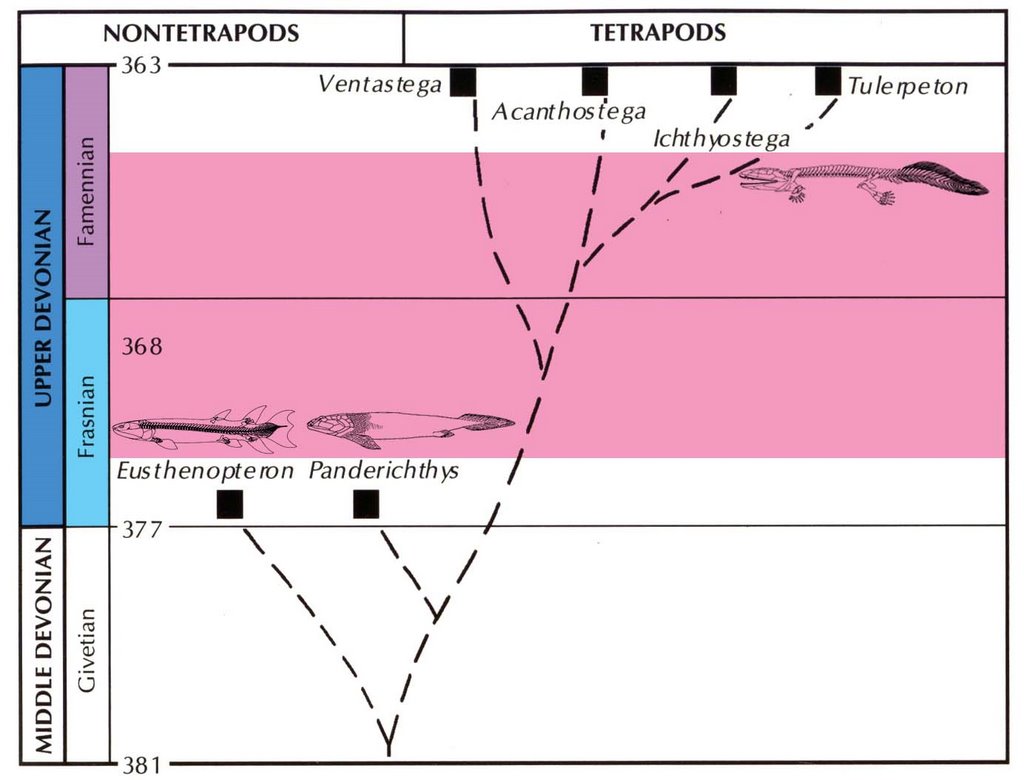There are good papers, great papers, and those clever little papers that make you say "I wish I'd thought of that!". Before I get to that, a little preamble:
Taphonomy is the branch of research that is interested in describing what happens to an organism between dying and ending up as a fossil (or even why it won't end up as a fossil). A lot can happen to an organism in that period of time, as the earth is a dynamic spheroid. The older a fossil, the more possible disturbances it can experience. Taphonomy can tell us a lot about the environment an organism was deposited in and it can provide important controls on the inferences we make about the environment we think a fossil organism once lived in. But taphonomy is also an important consideration in considering what an organism
is. That is, the 'life' of a fossil after death, might have a profound impact on how we place that fossil in the tree of life.
Enter the experiments of Rob Sansom and colleague's experiments on lamprey larvae and the title organism of this blog, reported in
this week's issue of Nature. Sansom et al. wanted to examine what happens to 'primitive' vertebrates that lack hard, mineralized tissues, the type of tissues that normally fossilize. I say "normally", because there are some 'abnormal' cases in which soft-bodied creatures with no bones, teeth, or hard cuticles actually form as fossils. Some such fossils have played an important role in understanding the timing and early origin of vertebrate animals.
For instance, this species known as
Yunnanozoon (Chen et al. 1999) from the Cambrian of China. It represents one of the earliest known vertebrates or vertebrate-like forms.
 Yunnanozoon
Yunnanozoon is remarkably well preserved, but other Cambrian chordates can be even more incomplete. The problem with such fossils is that they're difficult to interpret because they're squished, and they're made of soft parts. We have no idea how much they might have decayed, apart from the fact that they seem to be an exception to the rule that soft parts don't fossilize. This usually implies some sort of exceptional conditions favouring preservation, but doesn't necessarily rule out decay or other types of disruption.
Sansom et al. let larval lamprey and lancelets rot in buckets of sea water and recorded the progress of the decay over the period of several months.
The impressive and startling results of watching fish decay are below the fold:
As the animals rotted away, Sansom et al. recorded details of their anatomy. Not just general features, but the types of characters that would be used to score an organism for a phylogenetic analysis. These include classically important features, like the gill filaments, cartilages of the gill arches, the type of heart, the shape of the body muscles, the dorsal rod known as a notochord, and so on. These are characters that have normally played a significant role in establishing the relationships of vertebrates and their nearest non-vertebrate relatives, such as the lancelet.

What this figure shows is the length of time each character survived as the animal rotted. What's striking is that the characters that lasted longer all tend to be characters that we consider phylogenetically more primitive. Characters such as a notochord and segmented axial musculature are all considered to be primitive features shared by the last common ancestor of lancelets and lamprey. On the other hand, features such as eyes, or a chambered heart are more derived features found in modern vertebrates.
This figure shows nicely how the decay features plot out in phylogenetic history. If you go back to figure above, there is a graph showing the relationship between phylogenetic rank and decay stage.

What we see is that the level of decay would lead one to think that the taxon was signicantly more distantly related to the vertebrates, much like the early chordates we find in the Cambrian.
Not only do these results provide a caution against how we interpret soft-bodied Cambrian chordates, but it illustrates a framework for studying the phylogenetic effects of decay. As decay is studied across a wider phylogenetic scope, the more we can determine about the generality of these types of patterns. That will have a profound effect on how we study and interpret the exceptional cases of soft-tissue preservation in fossils.
Chen, Y.-J., Huang, D.-Y., and Li, C.-W. 1999. An early Cambrian craniate-like chordate. Nature 402:518-522 link
Sansom, R.S., Gabbott, S.E., and Purnell. M.A.2010. Non-random decay of chordate characters causes bias in fossil interpretation. Nature 463:797-800 link
Briggs, D.E.G. 2010. Palaeontology: Decay distorts ancestry. Nature 463:741-743 link
Read full post



